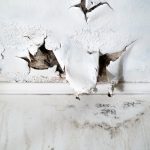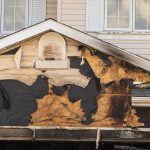Why Act Quickly After A Disaster?
- Within The First Few Hours
Water contamination spreads to unaffected areas; stains released from furniture, especially antique, may stain carpet permanently; moisture sensitive surfaces on furniture may turn white; paper goods may be ruined due to moisture absorption and swelling. Acid and oily soot residues coupled with extreme high temperatures, within minutes, may cause discoloration of plastic surfaces; rapidly cooling hot vaporized oils combined with soot residues may form a difficult to remove film on surfaces; due to heat, some surfaces may expand and contract when cooled, entrapping the soot residues. - Within The First Day
Furniture in direct contact with water begins to delaminate, swell, and legs may begin to split; drywall (sheet-rock) swells and starts to disintegrate (breakdown); bacterial odor may start to become apparent. In the presence of high temperatures, acid and oily soot residues; grout may be stained; plastic and fiberglass bath fixtures may yellow (especially those extending above the heat line) and furniture finishes may discolor. - Within Three to Five Days
In the presence of moisture, mold and mildew may appear along with a characteristic musty odor; moisture-sensitive internal components in organs and pianos begin to swell; metal surfaces begin to rust and door and window casings may swell, distort or delaminate. In the presence of acid and oily soot residues; painted walls may yellow permanently; metal may corrode and pit; wood furniture may require refinishing; linoleum floors may require replacement; clothing, drapery and upholstery fabrics may become permanently stained. - Within The First Two Weeks
Mold and mildew, associated with prolonged dampness, sinks roots into organic materials such as jute backings, paper coverings on drywall, paneling, wood, etc.
Acid and oily soot residues may cause carpet fibers, synthetic in particular, to yellow permanently; silver plate is corroded permanently; glass, china and crystal may require replacement due to sever etching and pitting caused by prolonged exposure to the acids. When salvageable smoke damaged finished floor coverings and structural materials are encountered, such as carpeting, fiberglass surfaces, Formica counter tops, etc., they should be cleaned at the beginning and again at the end or the restoration project. The key here is to neutralize the acid soot residue as quickly as possible in order to “mitigate” the loss, protecting the surface from permanent damage. Corrosion control, freeze protection as well as cleaning to prevent stains and/or odors to bond with surfaces, are examples of loss mitigation. Content items, for this same reason, do not have the luxury of waiting until the structural repairs may be determined or commenced.
In Summary:
The ability to effectively restore soot-contaminated surfaces is influenced primarily by:
1. How quickly the restoration process is begun.
2. The location of the heat (soot) line, should one exist.
3. Whether the soot is oily, greasy, baked-on or dry.
4. The amount of moisture present.


